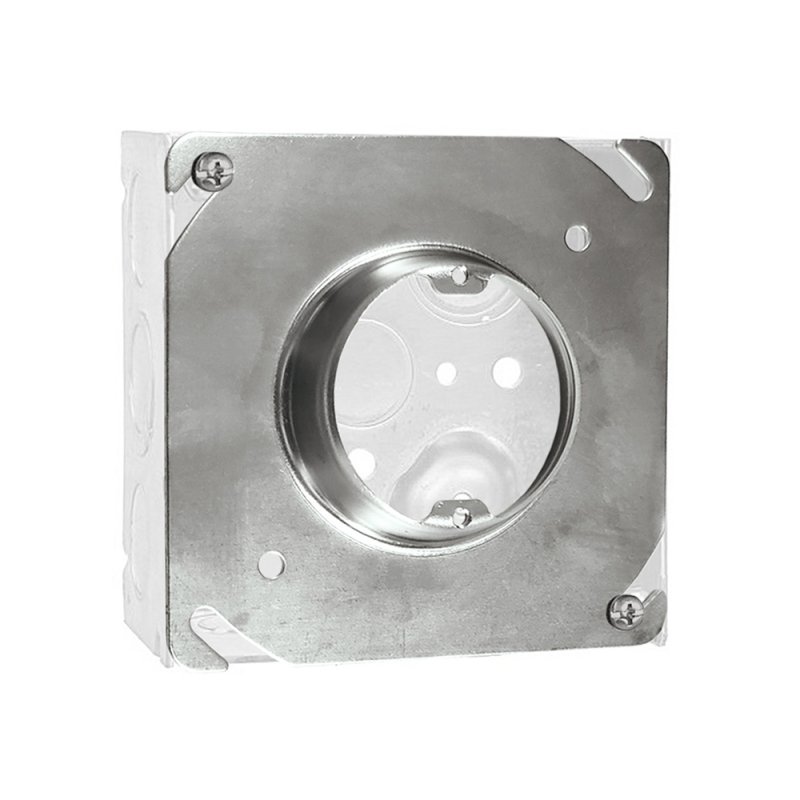
Besides boxes and conduit bodies, this article covers manholes and other electric enclosures intended for personnel entry. Article 314 also includes installation requirements for fittings used to join raceways and to connect raceways and cables to boxes and conduit bodies. After providing an introduction of Article 314, last month’s In Focus covered 314.15 and started discussing provisions in 314.16.
#Minimum cubic inchs of plaster rings full
Just because a cover can be installed on a junction box that is packed full of conductors, does not mean it is Code compliant. ROUND ELECTRICAL BOX COVERS FOR PLASTER RINGS FULL
#Minimum cubic inchs of plaster rings how to
Requirements in 314.16(A) and (B) specify how to calculate the maximum number of conductors in outlet, device, pull or junction boxes. ROUND ELECTRICAL BOX COVERS FOR PLASTER RINGS HOW TO While box volume calculations are in 314.16(A), box fill calculations are in 314.16(B). The volume of the box, as calculated in 314.16(A), must not be less than the fill calculation as calculated in 314.16(B). Table 314.16(A) provides minimum volume and maximum number of conductors for certain size metal boxes.

Table 314.16(A)’s middle section provides the cubic-inch and cubic-millimeter volume for each box trade size. Volume is not calculated by using the outside dimensions of a box. The volume is the actual amount of area or space inside the box. For example, what is the cubic-inch volume of a 4-inch square metal box with a depth of 1 1/2 inches? By using the outside dimensions, the size of the box is 24 cubic inches (4 x 4 x 1.5 = 24). However, this is not the cubic-inch volume of the box. As listed in Table 314.16(A), a 4-inch square metal box with a depth of 1 1/2 inches has a volume of 21 cubic inches (See Figure 1). When the same size conductors will be installed in a metal box that is listed in Table 314.16(A), no calculation is needed. First, find the box and then follow the row across to find the maximum number of conductors permitted. Note that the maximum number is based on the box not containing any fittings or devices, such as fixture studs, cable clamps, hickeys, receptacles or switches. For example, what are the maximum number of 18 through 6 AWG conductors permitted in a 3-inch-by-2-inch-by-2 1/2-inch device box? This box has a volume of 12.5 cubic inches and the maximum conductors permitted are: eight 18 AWG, seven 16 AWG, six 14 AWG, five 12 AWG, five 10 AWG, four 8 AWG and two 6 AWG conductors (See Figure 2). The total volume of a wiring enclosure (or box) includes the box and any assembled sections. Under specified conditions, additional volume can be gained by using plaster (mud) rings, domed covers, extension rings or similar devices. Additional volume of items such as plaster rings and domed covers can only be added if they are marked with their volume. For example, what is the total cubic-inch capacity of a square metal box measuring 4 inches-by-1 1/2 inches and a plaster ring? The plaster ring is marked with a volume of 7 1/2 cubic inches. First, find the volume of the 4-square box in Table 314.16(A).

A 4-inch square box having a depth of 1 1/2 inches is 21 cubic inches.

Now add the volume of the box to the volume of the plaster ring to find the total cubic-inch volume (21 + 7.5 = 28.5). Because of the plaster ring, the volume has increased from 21 to 28 1/2 cubic inches (See Figure 3).Īdditional volume can also be gained if the cover, extension ring or similar device is made from a box that is the same dimension as a box listed in Table 314.16(A). Under this condition, an extension ring is not required to have the volume marked on it. A 4-inch square extension ring having a depth of 1 1/2 inches is the same size as a 4-inch square box having a depth of 1 1/2 inches. The only difference is the extension ring has no back. Therefore, Table 314.16(A) also provides information for certain extension rings. ROUND ELECTRICAL BOX COVERS FOR PLASTER RINGS FULLįor example, what is the cubic-inch capacity of a 4-inch square box having a depth of 1 1/2 inches and a 4-inch square extension ring having a depth of 1 1/2 inches? The volume is not marked on the extension ring.ROUND ELECTRICAL BOX COVERS FOR PLASTER RINGS HOW TO.


 0 kommentar(er)
0 kommentar(er)
